- Assessing the Condition of the Grape Bush
- Summary of Assessing the Condition of the Grape Bush:
- Understanding the Benefits of Pruning
- Identifying the Dead and Diseased Vines
- Steps to Identify Dead Vines:
- Steps to Identify Diseased Vines:
- Recognizing the Unproductive Vines
- Focusing on the Strongest and Healthiest Vines
- Identifying the Strongest Vines
- Removing Weak and Diseased Vines
- Pruning Guidance for Healthy Vines
- Benefits of Focusing on Healthy Vines
- Considering the Grape Variety
- 1. Determining the Growth Habit
- 2. Understanding Fruit Production
- 3. Considering the Vigor
- Evaluating the Structure and Growth of the Vines
- The Importance of Timing: When and How Often to Prune
- Winter Pruning:
- Summer Pruning:
- Annual Pruning:
- Additional Considerations:
- Question-answer:
- When is the best time to prune an old grape bush?
- How do I choose which vines to cut and which to leave?
- What are some signs that a grape vine should be removed during pruning?
- Can I prune an old grape bush during the summer?
- How much should I prune an old grape bush?
- Video: How to – Prune Grape Vines
Pruning an old grape bush is a necessary task to ensure the health and productivity of the plant. Over time, grape vines can become tangled and overcrowded, leading to poor fruit production and increased susceptibility to diseases. By properly pruning an old grape bush, you can rejuvenate the plant, promote better air circulation, and create a structure that supports the growth of healthy grapes.
When choosing which vines to cut and which to leave, it is important to consider the age and health of each vine. Start by removing any dead or diseased wood, as these vines will never produce fruit and can spread infections to healthy parts of the plant. Look for vines that are weak, thin, or have small buds, as these are unlikely to produce a significant harvest.
On the other hand, prioritize keeping vines that are strong, thick, and have large buds. These are indicators of a healthy vine that will likely yield a bountiful crop. Additionally, look for vines that are well-positioned, with good spacing between them and a balanced distribution across the plant. These vines will have access to sunlight, air, and nutrients, leading to better fruit development.
Remember, the goal of pruning an old grape bush is to create an open and balanced structure. Remove any excessive growth or vines that are competing for space and resources. Use sharp and clean pruning shears to make clean cuts and minimize the risk of infection. Regularly maintain and monitor the grape bush throughout the growing season, making adjustments as necessary to ensure maximum productivity and health.
Pruning an old grape bush may seem daunting, but with a little knowledge and careful decision-making, you can transform your overgrown vine into a thriving and fruitful plant. By choosing the correct vines to cut and leaving behind the strongest and healthiest ones, you can ensure a successful harvest and enjoy the fruits of your labor.
Assessing the Condition of the Grape Bush
Before starting the pruning process, it is important to assess the overall condition of the grape bush. This will help you determine which vines are healthy and productive, and which ones should be cut.
Start by inspecting the branches and canes of the grape bush. Look for signs of disease, such as powdery mildew, black rot, or downy mildew. These diseases can weaken the plant and reduce its fruit production. If you notice any diseased branches or canes, mark them for removal.
Check the bark of the grape bush for any cracks or splits. This can indicate disease or damage. Healthy bark should be smooth and intact. If you find any damaged or diseased bark, prune it back to healthy wood.
Assess the overall health of the grape bush by examining the leaves. Healthy leaves should be green and free of spots or discoloration. If you notice any yellowing, wilting, or spotting on the leaves, it may be a sign of nutrient deficiency or pest infestation.
Look for signs of pest damage, such as chewed leaves or holes in the fruit. Common grape pests include grape phylloxera, grape berry moth, and Japanese beetles. If you find evidence of pest infestation, consider treating the vine with appropriate insecticides or other pest control methods.
Finally, evaluate the productivity of the grape bush. Look for clusters of grapes and assess the quality and size of the fruit. Healthy and productive vines should have well-developed and plump grapes.
It is important to note that a certain amount of pruning is necessary for grape bushes each year to encourage new growth and maintain productivity. However, excessive pruning can weaken the plant and reduce fruit production. Therefore, it is important to strike a balance when deciding how much to prune.
Summary of Assessing the Condition of the Grape Bush:
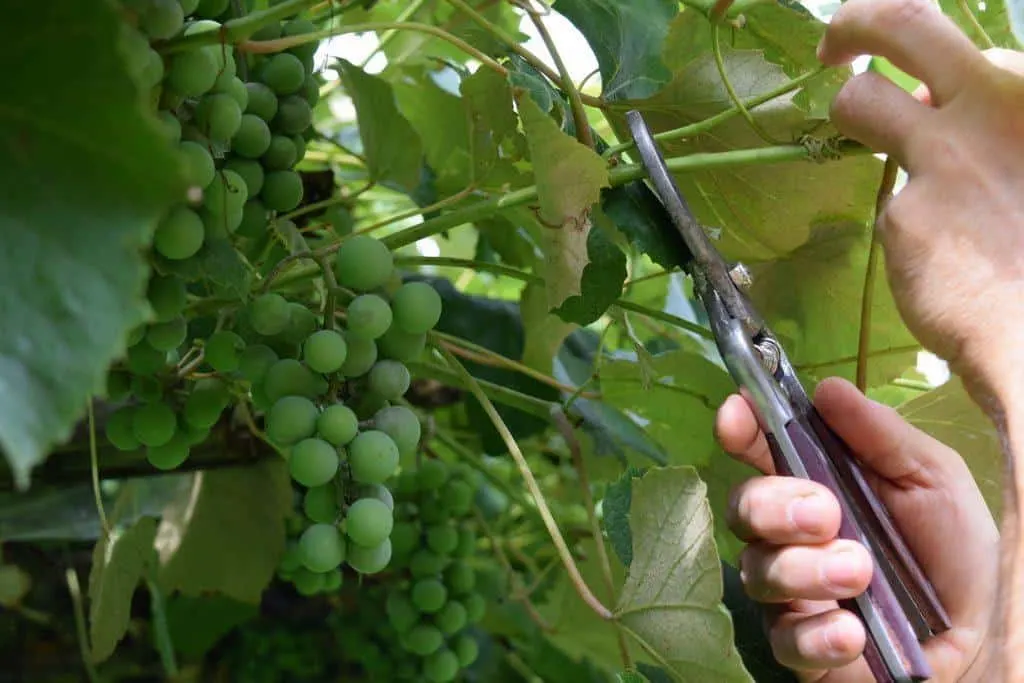
- Inspect branches and canes for disease
- Check the bark for any cracks or splits
- Examine the leaves for signs of yellowing, wilting, or spotting
- Look for evidence of pest damage
- Assess the productivity and quality of the fruit
Understanding the Benefits of Pruning
Pruning is an essential practice in maintaining and improving the health and productivity of grape vines. It involves the selective removal of certain parts of the vine, such as branches, shoots, and buds. While it may seem counterintuitive to cut off parts of the plant, pruning offers a range of benefits that are crucial for the overall well-being of the grape bush.
1. Stimulates Growth: Pruning stimulates new growth by removing older, unproductive wood and encouraging the emergence of fresh, productive shoots. This helps maintain the balance between vegetative growth and fruit production, ensuring optimal vine development.
2. Enhances Air Circulation: Pruning opens up the canopy of the grape bush, improving air circulation and reducing the risk of fungal diseases. Good airflow helps in drying out excess moisture and preventing the development of mold or mildew on the leaves and berries.
3. Controls Grape Yield: Through proper pruning, vineyard managers can manage the grape yield. By selectively removing buds and shoots, they can regulate the number of grape clusters per vine. This allows for better control over the quality and ripeness of the fruit, leading to improved wine production.
4. Improves Fruit Quality: Pruning helps concentrate the plant’s energy on fewer grape clusters, resulting in higher-quality fruit. The practice allows for better sun exposure, improved sugar accumulation, and the development of more complex flavors in the grapes.
5. Facilitates Disease and Pest Management: Pruning helps in identifying and removing diseased or infested parts of the vine. By removing these diseased elements, the chances of spreading the infection to healthy parts of the plant are reduced, improving the overall health of the grape bush.
6. Maintains Plant Structure: Regular pruning helps maintain the desired shape and structure of the grape bush. It prevents the vine from becoming overgrown and tangled, making it easier to manage the plant’s overall growth and prevent overcrowding in the vineyard.
7. Extends the Lifespan of the Vine: Pruning is crucial for the long-term health of the grape bush. By removing old, dead, or dying wood and promoting new growth, pruning helps ensure the longevity of the vine. Well-maintained vines can continue producing high-quality grapes for decades.
Overall, pruning is a fundamental technique in grapevine cultivation that offers numerous benefits. It plays a vital role in promoting growth, improving fruit quality, managing disease and pests, and maintaining the overall structure and health of the grape bush. Understanding the advantages of pruning allows vineyard managers to make informed decisions and implement effective pruning strategies for their grape vines.
Identifying the Dead and Diseased Vines
When pruning an old grape bush, it is important to identify and remove any dead or diseased vines. These vines can hinder the growth and productivity of the healthy vines, so it is essential to remove them to promote better overall plant health.
Steps to Identify Dead Vines:
- Inspect the vines: Carefully examine each vine for signs of life. Dead vines may have brittle or woody stems, no buds or leaves, and may be discolored.
- Check for flexibility: Gently bend the vine to check if it is still flexible. Dead vines will snap or break easily.
- Observe the bark: Look at the bark of the vine. Dead vines may have peeling or flaking bark, indicating that the wood is no longer alive.
- Look for signs of disease: Dead vines may exhibit symptoms of diseases such as powdery mildew or black rot. Check for white powdery growth or dark spots on the stems or leaves.
- Scan the canopy: Dead vines may have sparse or no foliage compared to healthy vines. They may also lack buds or show signs of wilting.
Steps to Identify Diseased Vines:
- Examine the leaves: Look for yellowing, spotting, or wilting leaves, which are common signs of disease. Leaves may also have unusual growth patterns or show signs of discoloration.
- Inspect the stems: Check for any signs of rot, discoloration, or lesions on the stems. Diseased vines may have black or brown spots, which can indicate the presence of fungal or bacterial infections.
- Check for pests: Look for any signs of pest infestations, such as chewed leaves, webbing, or the presence of insects on the vines. Pest damage can weaken the vines and make them more susceptible to diseases.
- Assess overall vine health: Consider the overall appearance and vigor of the vine. Diseased vines may appear stunted, have slow growth, or exhibit other signs of poor health.
By carefully inspecting each vine and following these steps, you can identify and remove the dead and diseased vines from your grape bush, ensuring that the healthy vines have the best chance to thrive and produce a bountiful harvest.
Recognizing the Unproductive Vines
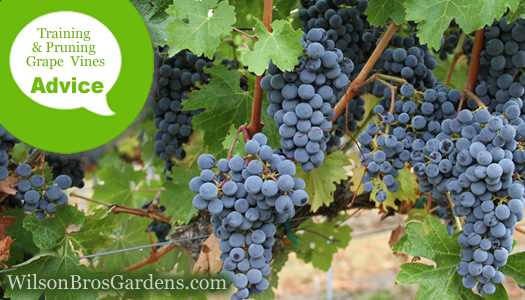
When pruning an old grape bush, it is important to identify and remove any unproductive vines. These vines may not be producing a significant amount of fruit or have become diseased or damaged. Removing them will allow the plant to allocate more energy to the productive vines, resulting in a higher yield of quality grapes.
Here are some signs to look for when recognizing unproductive vines:
- No fruit: Vines that have not produced any fruit in the past season or two may be unproductive. They may have died or been damaged, and removing them will allow space for new growth.
- Diseased or damaged vines: Vines that show signs of disease, such as discoloration, powdery mildew, or rot, should be removed. Similarly, vines that have been damaged by pests, harsh weather, or other factors may not recover and should be pruned.
- Weak growth: Vines that have weak or stunted growth compared to the rest of the plant may not be receiving enough sunlight or nutrients. Removing them will allow the healthier vines to thrive.
It is important to note that not all unproductive vines should be removed immediately. Sometimes, a vine may have had a bad year due to external factors, but can still recover and produce quality grapes. In such cases, it may be worth giving the vine another chance before deciding to prune it.
Regular monitoring and observation of the grape bush throughout the growing season will help in identifying unproductive vines. Keeping a record of each vine’s performance can also be helpful in making pruning decisions in subsequent years.
Focusing on the Strongest and Healthiest Vines
When pruning an old grape bush, it is important to focus on the strongest and healthiest vines for maximum productivity and growth. These vines are critical for producing high-quality grapes and maintaining the overall health of the plant.
Identifying the Strongest Vines
To identify the strongest vines, look for those that have a thick and sturdy structure. These vines are usually well-established and have a strong base. Additionally, check for vines that have a vibrant green color and smooth bark, as these are signs of a healthy plant.
Removing Weak and Diseased Vines
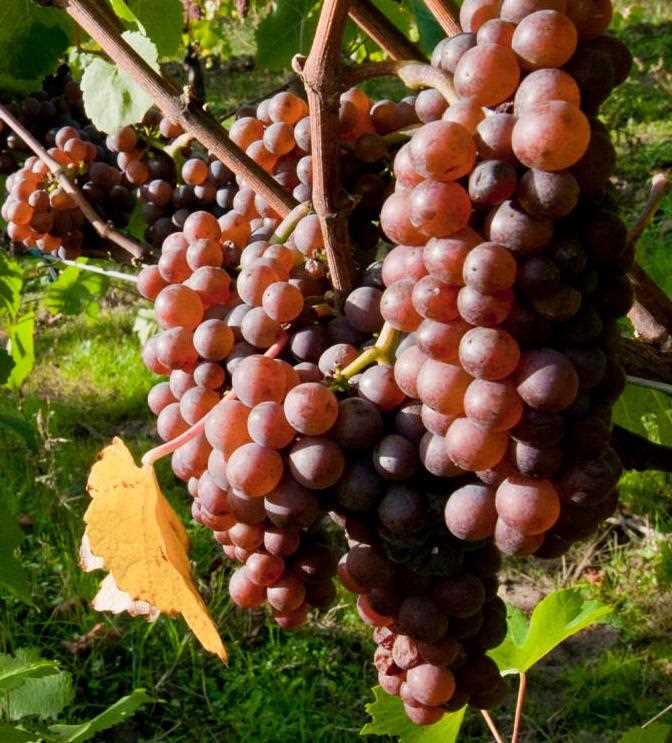
During the pruning process, it is crucial to remove any weak or diseased vines. These vines are not only less likely to produce good-quality grapes but can also harm the overall health of the plant. Look for vines that have a weak structure, discolored leaves, or signs of disease such as mildew or rot. Prune these vines close to the base to prevent the spread of disease.
Pruning Guidance for Healthy Vines
For the strongest and healthiest vines, focus on pruning to encourage proper growth and development. Here are some pruning tips:
- Remove excessive lateral growth: Lateral shoots that grow from the main stem can compete with the main vine for nutrients. Remove these lateral shoots to direct the plant’s energy towards the main vine.
- Thin out excessive clusters: If there are too many grape clusters forming on a single vine, thin them out to promote better air circulation and prevent overcrowding. This will lead to healthier grapes and reduce the risk of disease.
- Prune for sunlight exposure: Aim to create an open canopy by trimming overcrowded branches. This allows sunlight to reach the leaves and grapes, promoting photosynthesis and optimal fruit ripening.
- Train the vine: Use pruning to guide the growth of the vine along a trellis or support structure. This helps in maintaining an organized and manageable vineyard system.
Benefits of Focusing on Healthy Vines
By focusing on the strongest and healthiest vines during pruning, you will benefit from:
- Improved grape quality: Healthy vines are more likely to produce grapes of superior quality, with better flavor, aroma, and texture.
- Increase in yield: Pruning the strongest vines encourages optimal growth and production, resulting in a higher yield of grapes.
- Prevention of disease: By removing weak or diseased vines, you reduce the risk of diseases spreading throughout the grape bush and ensure the overall health of the plant.
- Easier maintenance: Focusing on healthy vines makes the maintenance of the grape bush more manageable and efficient.
In conclusion, paying attention to the strongest and healthiest vines during pruning is crucial for the success of your grape bush. By identifying and nurturing these vines, you will enjoy a bountiful harvest of high-quality grapes while maintaining the overall health and vitality of the plant.
Considering the Grape Variety
When pruning an old grape bush, it is important to consider the grape variety you are dealing with. Different grape varieties have different growth habits and pruning requirements. Understanding the characteristics of your grape variety will help you make informed decisions when it comes to pruning.
1. Determining the Growth Habit
First, you need to determine whether the grape variety you are dealing with is a cane or spur pruned variety. This will affect the way you prune the bush.
- Cane Pruned Varieties: These varieties produce fruit on one-year-old wood, or canes. It is important to leave a sufficient number of healthy canes during pruning to ensure a good crop.
- Spur Pruned Varieties: These varieties produce fruit on short, stubby branches known as spurs. When pruning, it is important to leave a sufficient number of healthy spurs to ensure fruit production.
2. Understanding Fruit Production
Next, you should consider how your grape variety produces fruit. Some varieties produce fruit on new growth, while others produce fruit on older wood.
- Fruit on New Growth: If your grape variety produces fruit on new growth, it is important to leave a good number of healthy buds during pruning. These buds will develop into new shoots that will bear fruit.
- Fruit on Old Wood: If your grape variety produces fruit on older wood, it is important to leave enough one-year-old canes or spurs during pruning. These canes/spurs will bear fruit in the coming growing season.
3. Considering the Vigor
Lastly, consider the vigor of your grape variety. Some varieties are naturally vigorous and require more severe pruning to control growth and promote fruit production. Other varieties are less vigorous and require less aggressive pruning.
- Vigorous Varieties: If your grape variety is known for its vigor, you may need to prune more aggressively to maintain its size and shape. This will help control the growth and ensure optimal fruit production.
- Less Vigorous Varieties: If your grape variety is less vigorous, you may need to prune more lightly to avoid reducing the overall size of the bush too much. This will help maintain the balance between vegetative growth and fruit production.
By considering the grape variety, its growth habit, fruit production, and vigor, you can make well-informed decisions when pruning your old grape bush. This will ultimately help you achieve better fruit quality and yield from your grapevine.
Evaluating the Structure and Growth of the Vines
Before pruning an old grape bush, it is important to evaluate the structure and growth of the vines. This will help determine which vines to cut and which to leave in order to ensure the health and productivity of the plant.
Growth Patterns
Observe the vines and identify the patterns of growth. Look for the main trunk or stem, which should be thick and sturdy. The main trunk should have lateral branches growing from it. These lateral branches are where the grape clusters will form.
Lateral Branches
Examine the lateral branches and identify any weak or diseased ones. Weak branches may be thin, spindly, or have limited foliage growth. Diseased branches may show signs of discoloration, abnormal growth, or presence of pests or diseases. These branches should be pruned to maintain the overall health of the plant.
Vigorous Shoots
Look for vigorous shoots that are growing from the main trunk or lateral branches. These shoots are usually thick and have healthy green foliage. These are the branches that will produce the highest quality grape clusters. It is important to leave these vigorous shoots intact and prune around them.
Old, Non-Productive Vines
Identify any old, non-productive vines that are not producing any new growth or grape clusters. These vines may be thick, woody, and have limited foliage. Prune these vines completely to allow more energy to be directed towards productive vines.
Spacing
Take note of the spacing between vines and adjust as necessary. Vines that are spaced too closely together can result in competition for resources and diminished grape quality. Prune vines to maintain an appropriate distance between them to promote optimal growth and grape production.
Overall Balance
Consider the overall balance of the grape bush. Ideally, the bush should have a balanced structure with equal distribution of foliage and grape clusters on all sides. Prune any overlapping or overcrowded branches to achieve an even distribution.
Personal Preference
Lastly, consider personal preference when evaluating the structure of the vines. Some gardeners may have specific preferences for the shape or form of the grape bush. Prune accordingly to achieve the desired aesthetic appearance.
Taking the time to evaluate the structure and growth of the vines before pruning will ensure that the right branches are cut and the plant is properly maintained for maximum grape production. By considering the growth patterns, evaluating the health of the branches, and maintaining a balanced structure, the grape bush will thrive and produce high-quality grapes.
The Importance of Timing: When and How Often to Prune
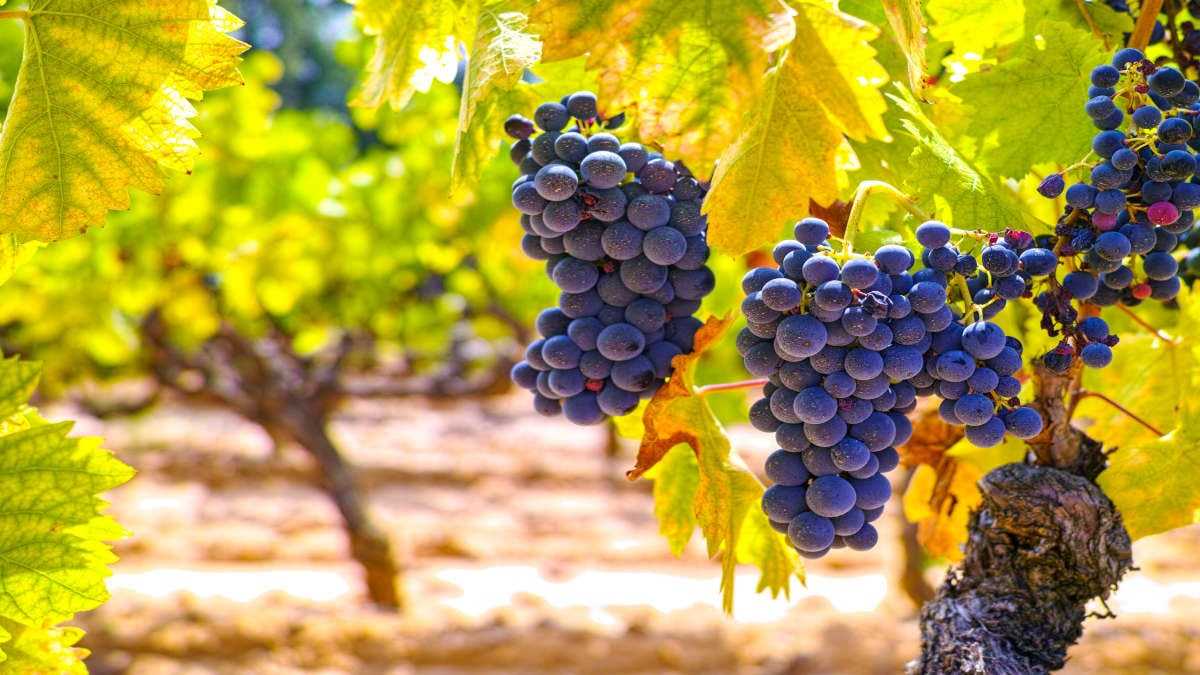
Pruning grape bushes is a crucial task in maintaining the health and productivity of the vines. The timing of pruning plays a significant role in ensuring the success of this process.
Winter Pruning:
- Winter is the ideal time to prune grape bushes, usually during the dormant season when the leaves have fallen. This is typically between late autumn and early spring, depending on the specific region and climate.
- Pruning during winter allows the vine to conserve its energy during the dormant period and promotes vigorous growth in the upcoming season.
- It is essential to prune before the new buds start to sprout in spring to avoid damaging the new growth.
Summer Pruning:
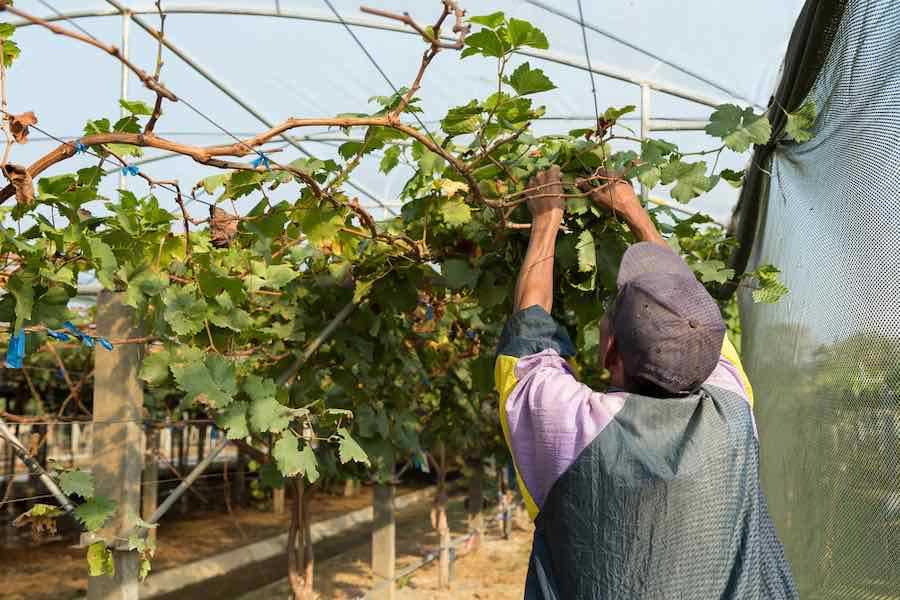
- Summer pruning is also necessary to control and shape the growth of grape vines.
- It is typically done after the first growth flush, around June or July when the vines have reached a desired height.
- This type of pruning focuses on removing excessive shoots, leaves, and lateral branches to improve air circulation and sunlight penetration.
Annual Pruning:
Annual pruning is recommended for grape bushes to maintain their productivity and overall health.
- For mature grape bushes, it is best to prune them annually during the winter when they are dormant.
- Remove old and diseased wood, weak shoots, and excess foliage to encourage the growth of new, healthy branches.
- Ensure to leave a balanced framework of main branches and choose the strongest, well-spaced shoots to retain for the next season.
Additional Considerations:
- Always use clean and sharp pruning tools to avoid the spread of diseases.
- Before pruning, assess the overall structure of the grape bush and identify any damaged or unproductive branches.
- Do not prune during excessively cold or wet periods, as this can harm the vine and delay its recovery.
- Seek guidance from local experts or experienced grape growers to determine the specific pruning practices suitable for your grape variety.
By understanding the importance of timing and following the appropriate pruning techniques, you can ensure the longevity and productivity of your grape bushes. Regular pruning will help maintain their health, promote robust growth, and ultimately result in bountiful grape harvests.
Question-answer:
When is the best time to prune an old grape bush?
The best time to prune an old grape bush is in late winter or early spring, before the new growth begins. This allows the plant to focus its energy on producing new shoots and leaves.
How do I choose which vines to cut and which to leave?
When pruning an old grape bush, it is important to remove any dead or diseased wood first. Then, selectively cut out any crowded or weak vines to allow better airflow and sunlight penetration. Leave the strongest and healthiest vines to ensure a good yield.
What are some signs that a grape vine should be removed during pruning?
During pruning, you should remove any grape vines that are dead, damaged, or diseased. Look for signs such as shriveled or discolored leaves, brittle wood, or growths on the vines. Removing these vines will promote the overall health of the grape bush.
Can I prune an old grape bush during the summer?
While it is not recommended to prune an old grape bush during the summer, you can do some light maintenance pruning if necessary. However, major pruning should be done in late winter or early spring to avoid removing new growth and affecting the plant’s ability to produce fruit.
How much should I prune an old grape bush?
The amount of pruning required for an old grape bush depends on its size and condition. As a general guideline, aim to remove about 70-90% of the previous year’s growth. This encourages new growth and helps maintain the bush’s shape and productivity.







